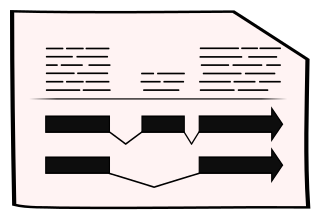Angiostrongylus cantonensis
BioProject PRJEB493 | Data Source Wellcome Sanger Institute | Taxonomy ID 6313
About Angiostrongylus cantonensis
The nematode Angiostrongylus cantonensis, or rat lungworm, is the most common cause of human eosinophilic meningitis. Humans are incidental hosts that become infected through ingestion of raw or undercooked infected rats (definitive host), snails, slugs, crabs, freshwater shrimps, or vegetables contaminated by slime from or parts of infected snails and slugs.
There is 1 alternative genome project for Angiostrongylus cantonensis available in WormBase ParaSite: PRJNA350391
Genome Assembly & Annotation
Assembly
The draft genome assembly was produced by the Parasite Genomic group at the Wellcome Trust Sanger Institute, in collaboration with Lian-Chen Wang (Chang Gung University, Taiwan) as part of the 50 Helminth Genomes project. The assembly uses Illumina paired-end sequencing followed by an in-house genome assembly pipeline comprising various steps, including contig assembly, scaffolding, gap-filling and error-correction.
Annotation
The gene predictions were made by the Parasite Genomics group at the Wellcome Trust Sanger Institute and WormBase, as part of the 50 Helminth Genomes project. An in-house pipeline was developed that used MAKER to generate high-quality annotations by integrating evidence from multiple sources: ab initio gene predictions from AUGUSTUS, GeneMark-ES, and SNAP; projected annotation from C. elegans (using GenBlastG) and the taxonomically nearest reference helminth genome (using RATT); and ESTs, mRNAs and proteins from related organisms aligned to the genome using BLAST, with refinement of alignments using Exonerate.
Downloads
Tools
Key Publications
- International Helminth Genomes Consortium. Comparative genomics of the major parasitic worms. Nat Genet, 2019;51(1):163-174
Navigation
Assembly Statistics
| Assembly | A_cantonensis_Taipei_v1_5_4, GCA_000950995.1 |
| Strain | Republic of China |
| Database Version | WBPS18 |
| Genome Size | 253,242,791 |
| Data Source | Wellcome Sanger Institute |
| Annotation Version | 2014-06-50HGPpatch |
Gene counts
| Coding genes | 14,520 |
| Gene transcripts | 14,520 |
Learn more about this widget in our help section
This widget has been derived from the assembly-stats code developed by the Lepbase project at the University of Edinburgh











